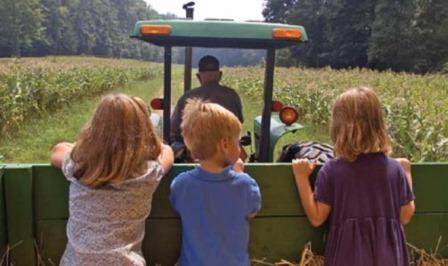When childhood obesity is on the rise and children are having trouble telling the difference between a zucchini and cucumber, farm to school introduces a refreshing concept into schools by connecting farmers, garden bed programs and salad bars into an area where children spend most of their days.
If a school has a cafeteria and serves lunch, creating a farm to school program is possible, says the Public Health Association of British Columbia guide on how to create a farm to school program. The first step is identifying what type of distribution model would be useful. These can be direct onsite farms, single direct farmer delivery, or a cooperative program that allows a group of farms to delivery produce to schools. Another option is a farm distributor program where produce from a farm can be sent to a central location either for storage or preparation. From there it can be sent to many different schools.
But what should happen once the food arrives at the school? The farm to school model is diverse, allowing for direct cafeteria programs and events such as fresh produce fundraisers. Reynolds Middle School in Saanich, British Columbia has taken the farm to school model and created a farm to salad bar. This program is run by eight enthusiastic students who make several different salads per week for around 100 of their student peers. They have expanded the program to make soup during the time of year when seasonal yields are low and have also baked some bread to go along with the soup. This impressive model of a salad bar won the BC Green Games Award.
Another great way of connecting farms to schools is by creating a ‘farm’ on school property. Lifecycles Society runs a Growing Schools program that helps schools create gardens with edible vegetables. The yields from these gardens can be used in school salad bar programs or in cafeterias. Along with being a great source of nutrition, the garden programs in schools are great grounds for teaching. Health Eating at School has an extensive resource page that shares information on how to start a school garden, teaching curriculum and policies around the consumption of produce growing at schools.
From farm gate to lunch plate farm to school programs are popping up all over Canada. Farm to school programs provide hands on opportunities for students to connect with food and to sample some tasty local vegetables.













